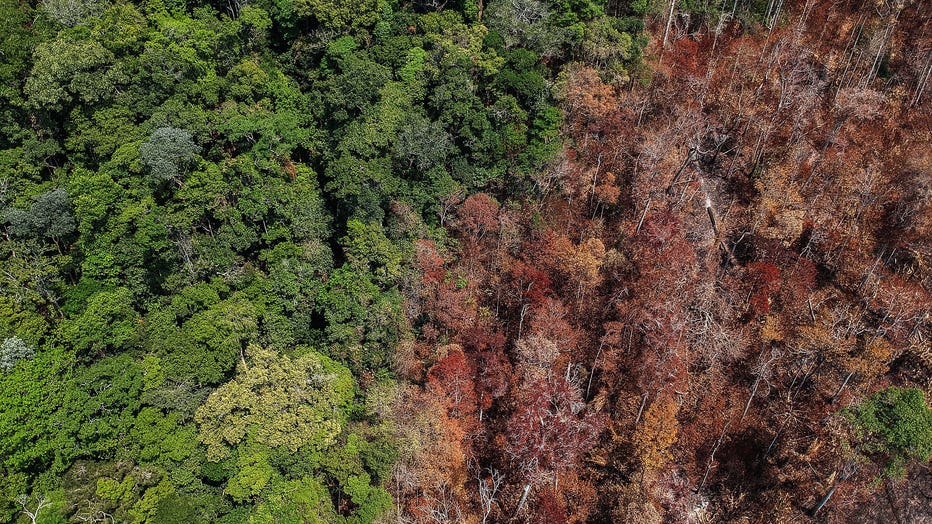NASA scientists say humans are drying out the Amazon — making it more vulnerable to fires and drought
PASADENA, Calif. - A new study by NASA found that the atmosphere above the Amazon rainforest has been drying out over the last 20 years — and human activity is primarily to blame.
This change in the atmosphere increases the demand for water and leaves ecosystems vulnerable to fires and drought, the agency said.
Researchers at NASA’s Jet Propulsion Laboratory in California analyzed decades of ground and satellite data over the Amazon rainforest to track how much moisture was in the atmosphere, as well as how much moisture was needed to maintain the rainforest system.
"We observed that in the last two decades, there has been a significant increase in dryness in the atmosphere as well as in the atmospheric demand for water above the rainforest," JPL's Armineh Barkhordarian, who is the lead author of the study, said in a statement. "In comparing this trend to data from models that estimate climate variability over thousands of years, we determined that the change in atmospheric aridity is well beyond what would be expected from natural climate variability."
Barkhordarian said elevated greenhouse gas levels are responsible for approximately half of the increased dryness. The rest is the result of ongoing human activity, including the burning of forests to clear land for agriculture and grazing.
The combination of these activities is causing the Amazon's climate to warm, researchers said.
The Amazon experienced a record number of fires this year, according to data by Brazil’s space research center.

An aerial view shows burnt areas near Moraes Almeida, a town along a section of the trans-Amazonian highyway, in Itaituba, Para state, Brazil, on Sept. 14, 2019. (Photo by NELSON ALMEIDA/AFP via Getty Images)
When a forest burns, it releases soot and other particles, called aerosols, into the atmosphere. Darker aerosols absorb heat from the sun, causing the atmosphere to warm. It can also interfere with cloud formation, and ultimately, the rainfall, scientists say.
RELATED: Brazil's Amazon rainforest ravaged by fire, smoke can be seen from space
The Amazon is the world's largest tropical rainforest, covering roughly 40 percent of South America and home to the greatest variety of plants and animals.
The most significant drying of the atmosphere was found in the southeast region, where the bulk of deforestation and agricultural expansion is happening, the agency said. Scientists also found drying in the northwest Amazon and noted the severe droughts over the past two decades, an area that typically has no dry season.
When healthy, the rainforest absorbs billions of tons of carbon dioxide each year through photosynthesis. By removing CO2 from the atmosphere, the Amazon helps to keep temperatures down and regulate the climate — but the system is also “highly sensitive to drying and warming trends,” NASA said.
Trees and plants pull water from the soil during photosynthesis to cool themselves and release water vapor into the atmosphere through pores on their leaves, the study said. The water vapor eventually rises to form clouds, which produce the rain that replenishes the water in the soil, allowing the cycle to continue.
Rainforests generate as much as 80 percent of their own rain, especially during the dry season, NASA said.
"It's a matter of supply and demand. With the increase in temperature and drying of the air above the trees, the trees need to transpire to cool themselves and to add more water vapor into the atmosphere," said JPL's Sassan Saatchi, co-author of the study. "But the soil doesn't have extra water for the trees to pull in."
Saatchi continued: "Our study shows that the demand is increasing, the supply is decreasing and if this continues, the forest may no longer be able to sustain itself.“
The study, called "A Recent Systematic Increase in Vapor Pressure Deficit Over Tropical South America," was published last month in Scientific Reports.
This story was reported from Cincinnati.

